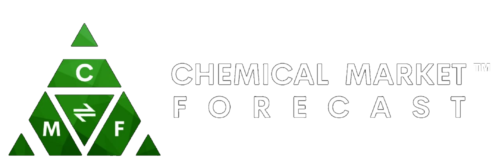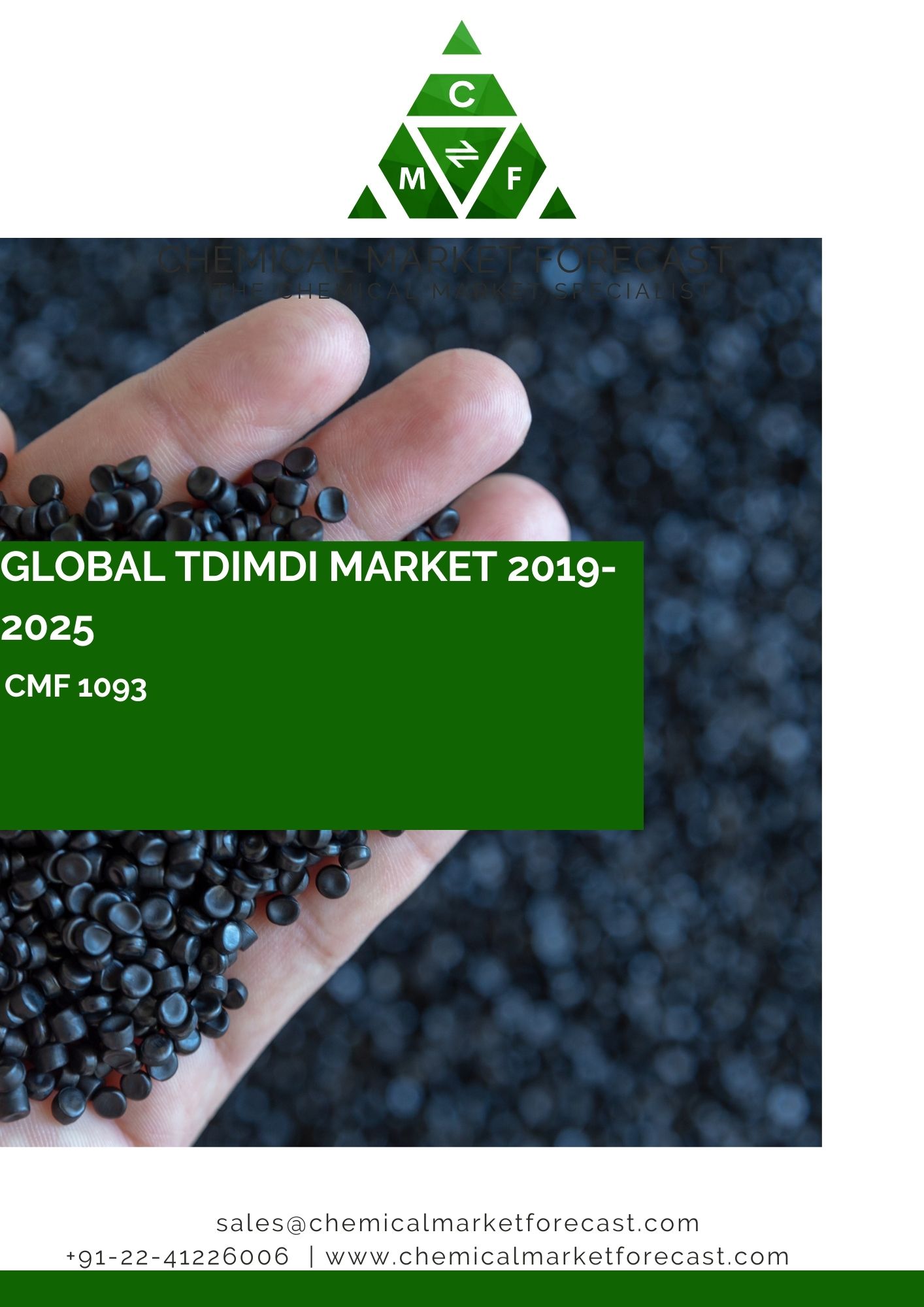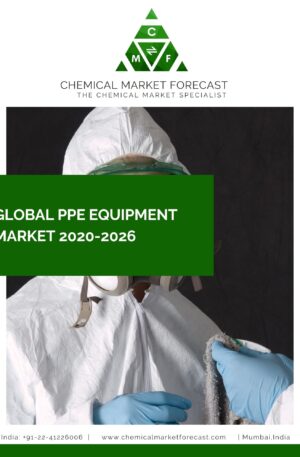Global Diisocyanates: toluene diisocyanate (TDI) and methylene diphenyl diisocyanate (MDI) Market
Diisocyanates (DII) are a family of versatile chemical building blocks that are used to produce polyurethane. The diisocyanates used for polyurethane production are divided into two segments, aliphatic and aromatic DII. Aliphatic DII are straight-chain compounds while Aromatic DII is cyclic. There are two primary aromatic diisocyanates: toluene diisocyanate (TDI) and methylene diphenyl diisocyanate (MDI). TDI and MDI are reacted with polyols to create polyurethane.
This report consists of a comprehensive value chain analysis for the polyurethane market. The report provides a conjunction between the application and growth of this vertical in terms of economic expansion. For instance, TDI is used for the production of flexible foams, i.e. they are increasingly used in industries that produce mattresses, couches, and cushions. TDI is also used in the automotive sector for manufacturing lighter parts of the vehicle. Thus, optimizing the fuel consumption associated with a relatively lightweight automobile. Additionally, the chemical compound is also used in packaging.
MDI is available in two forms including pure MDI and polymeric MDI (PDMI). Pure MDI is used as a raw material in the manufacturing processes for coatings, adhesives, sealants as well as elastomers. Some of the end products obtained from these specialties include paints, glues, and weather-resistant materials. PMDI is employed in the development of rigid, semi-rigid as well as flexible foams. The chemical compound is also used in the fabrication of polyisocyanurate and thermoset foams.
The value chain for the MDI branches to everyday end-products including home and refrigerator insulants. Therefore, the rising quality of life along the geographic locations dictate the upsurge of this market. MDI is also used to conserve energy as insulants in the form of rigid polyurethane foams. According to the American Council of Chemistry, the product has applications in the development of binders for the food as well as the foundry sector. Aliphatic DII is used to produce color stable polyurethane coatings and elastomers.
The growth in the consumer products industry is expected to drive the polyurethane market. Its applications in the expanding consumer electronics segment are anticipated to propel the growth of this market. The rising disposable income and increased purchasing power amongst the middle-class population increase their affordability in terms of consumer products. The chemical is also used in the Sports as well as Leisure based Footwear market owing to its properties like lightweight and high abrasion resistance.
On a regional scale, APAC is expected to be the fastest-growing market owing to the increased industrialization within this segment. The growing construction, manufacturing as well as automotive activities within this market are likely to boost sales for polyurethane. Within APAC, China is the largest consumer of polyurethane. This is due to the increased research and application of this product across verticals. The insulation properties of this material increases its application in cold regions including North America as well as Europe. Houses within this region make use of laminate insulation to improve thermal heat captivity within them. Laminate insulation is majorly used to cover floors in order to prevent heat dissipation. Therefore, the energy used by heating devices is optimized in the process.
On performing a quantitative analysis based on the value chain it is seen that the construction segment is expected to be one of the largest market sectors. The growing industrialization and commercialization on a worldwide basis are expected to boost market growth.
One of the key constraints for this market is the rising number of environmental regulations implied in production. Moreover, ecologically sustainable substitutes like epoxy-based coatings are also available within the market. On the business front, the market leaders have been focusing on the fabrication of environmentally friendly products. The key players within this market have been trying to shift to renewable chemicals feedstock for polyurethane. Alternative production methods are also being devised to exude the use of toxic and hazardous chemicals.
Several global reforms are being executed to secure the polyurethane trade on a global basis. On an environmental front, the OECD countries agreed to revise their regulations based on the export of hazardous plastic waste for recycling in Sept 2020. The cooperation has agreed to devise standards that are in line with the international changes. The regulation also states that advance consent would be required from the destination country prior to shipping.
Another drawback faced by this market is the fluctuating prices of oil. Most of the polymer derivatives are derived from petroleum refineries. This sector has a volatile and vastly variable margin which hereafter alters the growth trends associated with this market.
This report can also be used to understand the strategic and competitive mapping across several geographic regions. In 2020, BASF’s Coatings division released a range of waterborne coatings for the automotive sector. The company has developed four distinctive AUVOT shapes that represent different automotive features. With increased efficiency and advanced features, the polyurethane end product is expected to increase segment sales. The product also provides increased interaction between the display, color, and light settings for an automotive.
SCOPE:
The report,” Global TDI, MDI, and polyurethane Market 2019-2025”, focuses on the growing supplier distribution and the value chain analysis for this market. The changing market dynamics and expanding research in this segment have been studied and understood. The study period for this report ranges from 2019-2025. While the forecast period for this report extends from 2021-2025.
This report is aimed at:
- The key drivers, restraints, and challenges for this market have been studied and analyzed within this report.
- The change in market trends and their impact on the upcoming markets have been derived.
- The high growth markets and the key players within these segments are covered.
- The strategic growth margins between the segments for this market and the value chain analysis has been performed in this report.
- The market has been studied with the help of SWOT and PESTLE analysis.
- The upcoming technologies and their impacts on the current market scenario have been analyzed
Reasons to buy this report
- The current players of this market can use this report to understand the changing market trends.
- The potential players of this market can use this report to study the drivers, restraints, and challenges of this market.
- The industry suppliers can use this report to understand the change and demand across the supply chain.
- The value chain analysis can be studied to comprehend the growth associated with this segment.
- The upcoming technologies and their impacts can be studied by industry players with the help of this report.
Who is this report for
Industry Professionals: Can use this report to understand the drivers’ restraints and challenges for this market.
Sales Team: Can use this report to understand the demand across this vertical.
Financial Institutions: Can use this report to identify the high growth markets within this segment.
Technology Innovators: Can use this segment to understand the importance of material science technologies and their applications across several markets.
TABLE OF CONTENTS
Global Global Diisocyanates: toluene diisocyanate (TDI) and methylene diphenyl diisocyanate (MDI) Market Report
1. Market Introduction of Global Global Diisocyanates: toluene diisocyanate (TDI) and methylene diphenyl diisocyanate (MDI) Market
2. Market Segmentation of Global Diisocyanates: toluene diisocyanate (TDI) and methylene diphenyl diisocyanate (MDI) Market
2.1 Global Global Diisocyanates: toluene diisocyanate (TDI) and methylene diphenyl diisocyanate (MDI) Market Segmentation By Region
2.2 Global Global Diisocyanates: toluene diisocyanate (TDI) and methylene diphenyl diisocyanate (MDI) Market Segmentation By Type
2.3 Global Global Diisocyanates: toluene diisocyanate (TDI) and methylene diphenyl diisocyanate (MDI) Market Segmentation By Crop Type
3. Cost Structure Analysis of Global Diisocyanates: toluene diisocyanate (TDI) and methylene diphenyl diisocyanate (MDI) Market
4. Country Analysis of Global Global Diisocyanates: toluene diisocyanate (TDI) and methylene diphenyl diisocyanate (MDI) Market
4.1 China
4.1.1 Global Diisocyanates: toluene diisocyanate (TDI) and methylene diphenyl diisocyanate (MDI) Market Size in China
4.1.2 Global Diisocyanates: toluene diisocyanate (TDI) and methylene diphenyl diisocyanate (MDI) Market Analysis in China
4.1.3 Key Global Diisocyanates: toluene diisocyanate (TDI) and methylene diphenyl diisocyanate (MDI) companies in China
4.1.4 Regulatory Framework of Global Diisocyanates: toluene diisocyanate (TDI) and methylene diphenyl diisocyanate (MDI) Market in China
4.2 Germany
4.2.1 Global Diisocyanates: toluene diisocyanate (TDI) and methylene diphenyl diisocyanate (MDI) Market Size in Germany
4.2.2 Global Diisocyanates: toluene diisocyanate (TDI) and methylene diphenyl diisocyanate (MDI) Market Analysis in Germany
4.2.3 Key Global Diisocyanates: toluene diisocyanate (TDI) and methylene diphenyl diisocyanate (MDI) companies in Germany
4.2.4 Regulatory Framework of Global Diisocyanates: toluene diisocyanate (TDI) and methylene diphenyl diisocyanate (MDI) Market in Germany
4.3 France
4.3.1 Global Diisocyanates: toluene diisocyanate (TDI) and methylene diphenyl diisocyanate (MDI) Market Size in France
4.3.2 Global Diisocyanates: toluene diisocyanate (TDI) and methylene diphenyl diisocyanate (MDI) Market Analysis in France
4.3.3 Key Global Diisocyanates: toluene diisocyanate (TDI) and methylene diphenyl diisocyanate (MDI) companies in France
4.3.4 Regulatory Framework of Global Diisocyanates: toluene diisocyanate (TDI) and methylene diphenyl diisocyanate (MDI) Market in France
4.4 Italy
4.4.1 Global Diisocyanates: toluene diisocyanate (TDI) and methylene diphenyl diisocyanate (MDI) Market Size in Italy
4.4.2 Global Diisocyanates: toluene diisocyanate (TDI) and methylene diphenyl diisocyanate (MDI) Market Analysis in Italy
4.4.3 Key Global Diisocyanates: toluene diisocyanate (TDI) and methylene diphenyl diisocyanate (MDI) companies in Italy
4.4.4 Regulatory Framework of Global Diisocyanates: toluene diisocyanate (TDI) and methylene diphenyl diisocyanate (MDI) Market in Italy
4.5 Netherland
4.5.1 Global Diisocyanates: toluene diisocyanate (TDI) and methylene diphenyl diisocyanate (MDI) Market Size in Netherland
4.5.2 Global Diisocyanates: toluene diisocyanate (TDI) and methylene diphenyl diisocyanate (MDI) Market Analysis in Netherland
4.5.3 Key Global Diisocyanates: toluene diisocyanate (TDI) and methylene diphenyl diisocyanate (MDI) companies in Netherland
4.5.4 Regulatory Framework of Global Diisocyanates: toluene diisocyanate (TDI) and methylene diphenyl diisocyanate (MDI) Market in Netherland
4.6 Russia
4.6.1 Global Diisocyanates: toluene diisocyanate (TDI) and methylene diphenyl diisocyanate (MDI) Market Size in Russia
4.6.2 Global Diisocyanates: toluene diisocyanate (TDI) and methylene diphenyl diisocyanate (MDI) Market Analysis in Russia
4.6.3 Key Global Diisocyanates: toluene diisocyanate (TDI) and methylene diphenyl diisocyanate (MDI) companies in Russia
4.6.4 Regulatory Framework of Global Diisocyanates: toluene diisocyanate (TDI) and methylene diphenyl diisocyanate (MDI) Market in Russia
4.7 Canada
4.7.1 Global Diisocyanates: toluene diisocyanate (TDI) and methylene diphenyl diisocyanate (MDI) Market Size in Canada
4.7.2 Global Diisocyanates: toluene diisocyanate (TDI) and methylene diphenyl diisocyanate (MDI) Market Analysis in Canada
4.7.3 Key Global Diisocyanates: toluene diisocyanate (TDI) and methylene diphenyl diisocyanate (MDI) companies in Canada
4.7.4 Regulatory Framework of Global Diisocyanates: toluene diisocyanate (TDI) and methylene diphenyl diisocyanate (MDI) Market in Canada
4.8 Mexico
4.8.1 Global Diisocyanates: toluene diisocyanate (TDI) and methylene diphenyl diisocyanate (MDI) Market Size in Mexico
4.8.2 Global Diisocyanates: toluene diisocyanate (TDI) and methylene diphenyl diisocyanate (MDI) Market Analysis in Mexico
4.8.3 Key Global Diisocyanates: toluene diisocyanate (TDI) and methylene diphenyl diisocyanate (MDI) companies in Mexico
4.8.4 Regulatory Framework of Global Diisocyanates: toluene diisocyanate (TDI) and methylene diphenyl diisocyanate (MDI) Market in Mexico
4.9 Singapore
4.9.1 Global Diisocyanates: toluene diisocyanate (TDI) and methylene diphenyl diisocyanate (MDI) Market Size in Singapore
4.9.2 Global Diisocyanates: toluene diisocyanate (TDI) and methylene diphenyl diisocyanate (MDI) Market Analysis in Singapore
4.9.3 Key Global Diisocyanates: toluene diisocyanate (TDI) and methylene diphenyl diisocyanate (MDI) companies in Singapore
4.9.4 Regulatory Framework of Global Diisocyanates: toluene diisocyanate (TDI) and methylene diphenyl diisocyanate (MDI) Market in Singapore
4.10 United Kingdom
4.10.1 Global Diisocyanates: toluene diisocyanate (TDI) and methylene diphenyl diisocyanate (MDI) Market Size in United Kingdom
4.10.2 Global Diisocyanates: toluene diisocyanate (TDI) and methylene diphenyl diisocyanate (MDI) Market Analysis in United Kingdom
4.10.3 Key Global Diisocyanates: toluene diisocyanate (TDI) and methylene diphenyl diisocyanate (MDI) companies in United Kingdom
4.10.4 Regulatory Framework of Global Diisocyanates: toluene diisocyanate (TDI) and methylene diphenyl diisocyanate (MDI) Market in United Kingdom
4.11 Switzerland
4.11.1 Global Diisocyanates: toluene diisocyanate (TDI) and methylene diphenyl diisocyanate (MDI) Market Size in Switzerland
4.11.2 Global Diisocyanates: toluene diisocyanate (TDI) and methylene diphenyl diisocyanate (MDI) Market Analysis in Switzerland
4.11.3 Key Global Diisocyanates: toluene diisocyanate (TDI) and methylene diphenyl diisocyanate (MDI) companies in Switzerland
4.11.4 Regulatory Framework of Global Diisocyanates: toluene diisocyanate (TDI) and methylene diphenyl diisocyanate (MDI) Market in Switzerland
4.12 Brazil
4.12.1 Global Diisocyanates: toluene diisocyanate (TDI) and methylene diphenyl diisocyanate (MDI) Market Size in Brazil
4.12.2 Global Diisocyanates: toluene diisocyanate (TDI) and methylene diphenyl diisocyanate (MDI) Market Analysis in Brazil
4.12.3 Key Global Diisocyanates: toluene diisocyanate (TDI) and methylene diphenyl diisocyanate (MDI) companies in Brazil
4.12.4 Regulatory Framework of Global Diisocyanates: toluene diisocyanate (TDI) and methylene diphenyl diisocyanate (MDI) Market in Brazil
4.13 USA
4.13.1 Global Diisocyanates: toluene diisocyanate (TDI) and methylene diphenyl diisocyanate (MDI) Market Size in US
4.13.2 Global Diisocyanates: toluene diisocyanate (TDI) and methylene diphenyl diisocyanate (MDI) Market Analysis in US
4.13.3 Key Global Diisocyanates: toluene diisocyanate (TDI) and methylene diphenyl diisocyanate (MDI) companies in US
4.13.4 Regulatory Framework of Global Diisocyanates: toluene diisocyanate (TDI) and methylene diphenyl diisocyanate (MDI) Market in US
4.14 Japan
4.14.1 Global Diisocyanates: toluene diisocyanate (TDI) and methylene diphenyl diisocyanate (MDI) Market Size in Japan
4.14.2 Global Diisocyanates: toluene diisocyanate (TDI) and methylene diphenyl diisocyanate (MDI) Market Analysis in Japan
4.14.3 Key Global Diisocyanates: toluene diisocyanate (TDI) and methylene diphenyl diisocyanate (MDI) companies in Japan
4.14.4 Regulatory Framework of Global Diisocyanates: toluene diisocyanate (TDI) and methylene diphenyl diisocyanate (MDI) Market in Japan
4.15 South Korea
4.15.1 Global Diisocyanates: toluene diisocyanate (TDI) and methylene diphenyl diisocyanate (MDI) Market Size in South Korea
4.15.2 Global Diisocyanates: toluene diisocyanate (TDI) and methylene diphenyl diisocyanate (MDI) Market Analysis in South Korea
4.15.3 Key Global Diisocyanates: toluene diisocyanate (TDI) and methylene diphenyl diisocyanate (MDI) companies in South Korea
4.15.4 Regulatory Framework of Global Diisocyanates: toluene diisocyanate (TDI) and methylene diphenyl diisocyanate (MDI) Market in South Korea
4.16 India
4.16.1 Global Diisocyanates: toluene diisocyanate (TDI) and methylene diphenyl diisocyanate (MDI) Market Size in India
4.16.2 Global Diisocyanates: toluene diisocyanate (TDI) and methylene diphenyl diisocyanate (MDI) Market Analysis in India
4.16.3 Key Global Diisocyanates: toluene diisocyanate (TDI) and methylene diphenyl diisocyanate (MDI) companies in India
4.16.4 Regulatory Framework of Global Diisocyanates: toluene diisocyanate (TDI) and methylene diphenyl diisocyanate (MDI) Market in India
4.17 Thailand
4.17.1 Global Diisocyanates: toluene diisocyanate (TDI) and methylene diphenyl diisocyanate (MDI) Market Size in Thailand
4.17.2 Global Diisocyanates: toluene diisocyanate (TDI) and methylene diphenyl diisocyanate (MDI) Market Analysis in Thailand
4.17.3 Key Global Diisocyanates: toluene diisocyanate (TDI) and methylene diphenyl diisocyanate (MDI) companies in Thailand
4.17.4 Regulatory Framework of Global Diisocyanates: toluene diisocyanate (TDI) and methylene diphenyl diisocyanate (MDI) Market in Thailand
4.18 Russia
4.18.1 Global Diisocyanates: toluene diisocyanate (TDI) and methylene diphenyl diisocyanate (MDI) Market Size in Russia
4.18.2 Global Diisocyanates: toluene diisocyanate (TDI) and methylene diphenyl diisocyanate (MDI) Market Analysis in Russia
4.18.3 Key Global Diisocyanates: toluene diisocyanate (TDI) and methylene diphenyl diisocyanate (MDI) companies in Russia
4.18.4 Regulatory Framework of Global Diisocyanates: toluene diisocyanate (TDI) and methylene diphenyl diisocyanate (MDI) Market in Russia
4.19 Malaysia
4.19.1 Global Diisocyanates: toluene diisocyanate (TDI) and methylene diphenyl diisocyanate (MDI) Market Size in Malaysia
4.19.2 Global Diisocyanates: toluene diisocyanate (TDI) and methylene diphenyl diisocyanate (MDI) Market Analysis in Malaysia
4.19.3 Key Global Diisocyanates: toluene diisocyanate (TDI) and methylene diphenyl diisocyanate (MDI) companies in Malaysia
4.19.4 Regulatory Framework of Global Diisocyanates: toluene diisocyanate (TDI) and methylene diphenyl diisocyanate (MDI) Market in Malaysia
4.20 Saudi Arabia
4.20.1 Global Diisocyanates: toluene diisocyanate (TDI) and methylene diphenyl diisocyanate (MDI) Market Size in Saudi Arabia
4.20.2 Global Diisocyanates: toluene diisocyanate (TDI) and methylene diphenyl diisocyanate (MDI) Market Analysis in Saudi Arabia
4.20.3 Key Global Diisocyanates: toluene diisocyanate (TDI) and methylene diphenyl diisocyanate (MDI) companies in Saudi Arabia
4.20.4 Regulatory Framework of Global Diisocyanates: toluene diisocyanate (TDI) and methylene diphenyl diisocyanate (MDI) Market in Saudi Arabia
5. Global Global Diisocyanates: toluene diisocyanate (TDI) and methylene diphenyl diisocyanate (MDI) Market Trends
5.1 Global Global Diisocyanates: toluene diisocyanate (TDI) and methylene diphenyl diisocyanate (MDI) Market Trends- Key Drivers
5.2 Global Global Diisocyanates: toluene diisocyanate (TDI) and methylene diphenyl diisocyanate (MDI) Market Trends- Key Restraints
5.3 Global Global Diisocyanates: toluene diisocyanate (TDI) and methylene diphenyl diisocyanate (MDI) Market Trends- Key Challenges
5.4 Porter’s Five Forces Analysis of Global Diisocyanates: toluene diisocyanate (TDI) and methylene diphenyl diisocyanate (MDI) Market
5.5 PEST Analysis- Global Diisocyanates: toluene diisocyanate (TDI) and methylene diphenyl diisocyanate (MDI) Market
6. Global Global Diisocyanates: toluene diisocyanate (TDI) and methylene diphenyl diisocyanate (MDI) Market Forecast
6.1 Global Global Diisocyanates: toluene diisocyanate (TDI) and methylene diphenyl diisocyanate (MDI) Market Forecast By Region
6.1.1 North America
6.1.2 Europe
6.1.3 APAC
6.1.4 Middle East
6.1.5 ROW
6.2 Global Global Diisocyanates: toluene diisocyanate (TDI) and methylene diphenyl diisocyanate (MDI) Market Forecast By Type
6.2.1 Fertilizer
6.2.2 Pesticide
6.3 Global Global Diisocyanates: toluene diisocyanate (TDI) and methylene diphenyl diisocyanate (MDI) Market Forecast By Crop Type
6.3.1 Fruits & Vegetables
6.3.2 Oilseed and Pulses
6.3.3 Cereals & Grains
6.3.4 Other
7. Supply Chain Analysis of the Global Diisocyanates: toluene diisocyanate (TDI) and methylene diphenyl diisocyanate (MDI) Market
8. Opportunity Analysis
9. Scenario Analysis
10. Key Company Profiles
11. Strategic Conclusions





